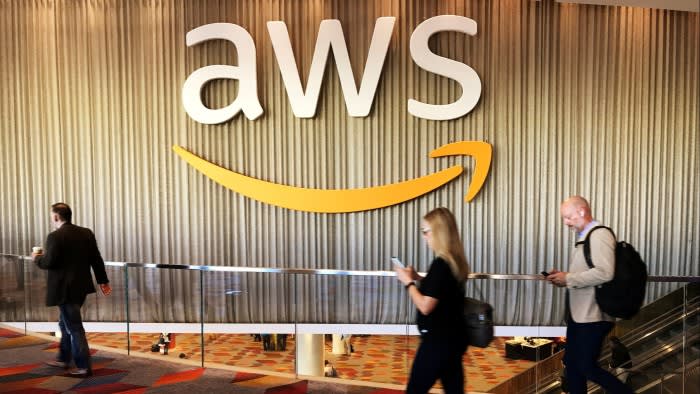Unlock the Editor’s Digest for free
Roula Khalaf, Editor of the FT, selects her favourite stories in this weekly newsletter.
Fear is back on Wall Street. Concerns over softening US consumer spending and signs of a slowing American economy triggered a market rout that wiped billions off global stock markets on Monday.
Retailers have spent months warning of pressures on consumer spending. The scale of the market tantrum looks out of whack with the underlying economic data. The intensity of the sell-off may have more to do with the unwinding of the carry trades that many investors used to fund their bets rather than a sudden deterioration in the outlook for the US economy.
Among consumer-facing stocks, Amazon still looks a solid bet. The ecommerce giant has lost $295bn — or 15 per cent of its value since last Thursday — when its second-quarter earnings showed that it is not immune to value-conscious consumer behaviour.
The concerns are understandable. Revenue for the June quarter grew 10 per cent year over year to $148bn, a shade below the market’s expectations. Online stores and third-party seller services — Amazon’s two biggest segments by revenue — were behind the miss. Quarterly sales growth at both slowed markedly from the first quarter.
Competition from Temu and Shein may be to blame. The e-retailers have been able to undercut US rivals by delivering a variety of cheap goods to Americans straight from factories and warehouses in China.

But a slowdown in sales growth in two divisions is less worrying for Amazon than for pure-play retailers such as Target or Dollar General. Retail sales are a low-margin affair. AWS, Amazon’s cloud computing business, is the real cash cow. The unit generated just 16 per cent of Amazon’s revenue last year but accounted for two-thirds of group operating income.
Unlike online sales, AWS sales growth has continued to accelerate. This grew 19 per cent amid strong artificial intelligence-driven demand. Operating profit rose by $4bn to $9.3bn. Advertising — another higher margin business — also booked strong gains, with sales up 20 per cent year on year.
At 31 times forward earnings, Amazon’s valuation is well below its three-year average of about 62 times. Like other big tech companies, Amazon’s plans to increase AI investment have unsettled investors. But the rise in capex spending is needed to meet the surge in demand. Amazon said the backlog for AWS services stood at $156.6bn at the end of the second quarter. For context, that number is bigger than AWS’s current annual revenue run rate of about $105bn.
Meanwhile, that growth will cushion Amazon from the drag of a cash-strapped US consumer — a comfort that other retail names may find sorely lacking.


